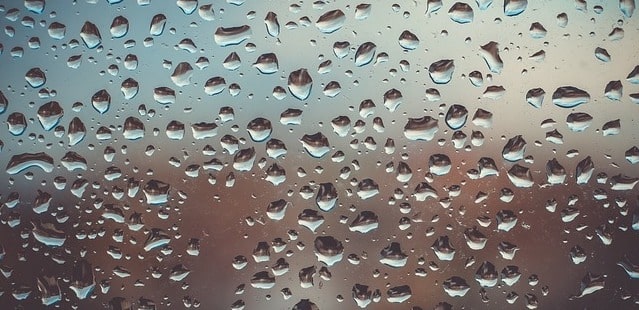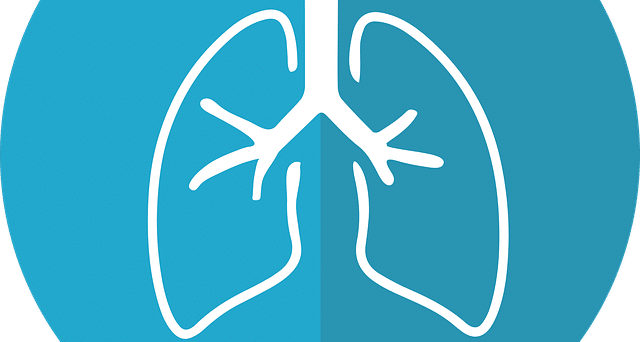Many people with MAC lung infection (NTM) wonder whether it’s okay to use a “humidifier” with the condition.
Depending on who you ask, you may get vastly different responses.
Some think using a humidifier is perfectly fine – as long as certain precautions are taken whereas others think it’s too risky.
Humidifiers can cause MAC lung disease (or worsen it)
In susceptible individuals, humidifiers can act as a reservoir for mycobacteria and be a primary source of infection.

Because humidifiers can: (A) harbor mycobacteria AND (B) project the mycobacteria-laden water vapor into the air – they could cause MAC lung infection.
Furthermore, it’s possible that humidifiers could theoretically exacerbate preexisting MAC lung disease.
How? By projecting additional mycobacteria into the air that are then inhaled and deposited within the lungs – whereafter they propagate/multiply.
Is it possible to safely use a humidifier with MAC lung disease?
Many wonder whether it’s possible to safely use a humidifier with: (A) preexisting MAC lung disease; (B) a history of MAC lung infection; and/or (C) high susceptibility to MAC lung infection.

The honest answer is that it might be possible to safely use a humidifier with MAC lung disease, however, it’s generally NOT recommended.
Why? Humidifiers can be incubators for MAC – and may create a household environment that’s conducive to MAC proliferation/circulation and subsequent infection (or reinfection).
If you’re going to use a humidifier with MAC lung disease…
If, for whatever reason(s) you require a humidifier to help manage a specific medical condition or because you cannot breathe well in dry conditions – there are some things you can do to decrease your risk of humidifier-related infection.

Use evaporative or steam humidifiers
There appears to be a significantly lower risk of infection associated with evaporative and steam humidifiers.
Evaporative and steam humidifiers are not expected to aerosolize mineral products and opportunistic pathogens into the air.
- Note: The above are affiliate links and help me support this website – the cost is the same as usual.
- Note: Read the description details if you’re shopping for a humidifier – as many humidifiers are listed under the search for “evaporative” and/or “steam” humidifiers that are ultrasonic.
Avoid ultrasonic & impeller humidifiers
Though it may be possible to use ultrasonic humidifiers safely (if you’re extremely careful/cautious), they are far more dangerous due to the smaller-sized vapor emissions. (R)
According to Public Health Ontario:
“Ultrasonic and impeller humidifiers can produce aerosols possibly contaminated with pathogenic bacteria, the risk potential for disease transmission is higher” & “the size of the particles generated by ultrasonic and impeller humidifiers is small enough to be inhaled into the lungs.”
Use distilled or RO water & boil at least 10 minutes before adding to humidifier
This means you should have water “boiling” completely and the boil should be sustained for a minimum of 10 minutes.
This is a recommendation from one of the leading researchers of household sources of mycobacteria, Joseph Falkinham III.
(Obviously: Let water cool after boiling – don’t put water into humidifier immediately after boiling). (R)
Adhere to a “minimal effective” humidity
Try to keep humidity at the minimum level that enables healthy functioning.
For example, use the humidifier to bring humidity up to 35-40% (or whatever suits you) but do NOT exceed this minimum threshold.
(Many newer humidifiers can sense humidity and stop automatically when they reach a pre-programmed level).
Run humidifier when away (i.e. out of the house)
I’m not sure whether there’s any rationale for this, but one patient reported that their doctor said humidifiers should only be run when out of the home.
Perhaps avoiding humidification when home reduces exposure to higher concentrations of airborne mycobacteria emitted by the humidifer – relative to when away.
UV light disinfection
Some humidifiers feature inbuilt UV-lights to disinfect the water.
Although these are NOT perfect (they don’t eliminate 100% of mycobacteria), they may significantly decrease mycobacterial load (assuming well-designed and legitimate UV light). (R)
(This is probably more useful if you get an ultrasonic humidifier and may be less necessary with evaporative humidifiers.)
Do NOT run humidifier “all day” or “over-humidify”
Limit the amount of time your humidifier is running and avoid over-humidification.
Excessive humidification (e.g. above 50-60%) can significantly increase risk of various infections (bacterial, viral, fungal), allergic conditions (mites, rhinitis, asthma), and chemical interactions.
Do NOT use a HVAC/ducted humidifier
This should be obvious, but using an HVAC/ducted humidifier will humidify your entire home’s “ductwork.”
Not only is it more difficult to ensure that the humidity emitted is MAC-free, but it may promote MAC growth within your ductwork (not good).
Regularly clean humidifier
Using things like bleach and/or cleaning vinegar at least once a month for a minimum of a 30-minute soak (longer is better).
(Obviously: Do not run with cleaning products in the humidifier).
This will ensure that any MAC growing within the humidifier is eliminated.
A literature review states:
“Most disease transmission associated with portable humidifiers is due to aerosol producing humidifiers that were not properly maintained, cleaned, or disinfected.”
Once contaminated:
“Humidifiers are very difficult to clean” and “can still be a source of exposure even if cleaning is attempted and refilled with sterile water.”
(This is especially true if mineral deposits or biofilm is present.)
Be cautious of humidifier disinfectants
Research suggests that, once released into the air, humidifier disinfectants become tiny “nano-size” particles and can cause chemical bronchoalveolitis (not healthy for anyone – but particularly dangerous for those with preexisting lung conditions.) (R)
Buy a humidifier that’s easy to clean
Not all humidifiers are easy to clean. Some are difficult to take apart and have just a small hole to pour water in.
With difficult-to-clean humidifiers, MAC could end up accumulating within the innermost zones/walls, fans, or filter areas of the humidifier.
Only humidify necessary areas
There’s no need to humidify every last nook and cranny of your home.
Only humidify areas that you deem vital for your health and performance.
Do NOT run while sleeping
Why? During sleep many people end up breathing through their mouths (at least for a portion of the night).
“Mouth breathing” provides a more direct route of airborne MAC (e.g. MAC-laden water vapor) to your lungs. (The nose is a better “filter”).
Assuming the water vapor emitted by the humidifier is devoid of MAC – you’ll obviously be at much lower risk than if it contains MAC.
That said, humidification of your living space may inherently attract MAC or fuel MAC growth – even if the humidifier and/or water emitted by the humidifier currently or initially didn’t contain MAC.
One hypothesis is that by just using a humidifier, you create a more habitable environment around your home (or in humidified living spaces) where MAC can grow.
If this is the case, you might be increasing infection risk to some extent (but not necessarily – because it doesn’t guarantee that MAC will grow or that you’ll be infected via pockets of MAC around the house).
My MAC infection & view on humidification…
When diagnosed with MAC, I underwent conventional treatment with the “Big 3” antibiotics on an intermittent (M, W, F) schedule.

Thankfully the treatment was successful and I’ve been MAC-free for ~2 years (*knock on wood*).
I have minor lung damage at the site of infection (some scar tissue), but nothing else is anatomically atypical with my lungs. In fact, my pulmonologist stated that I do NOT even have bronchiectasis.
I’ve never smoked or had any unhealthy habits that would’ve resulted in a MAC infection – and had ZERO notable risk factors (e.g. family history, genetic predisposition, atypical body morphology, immune impairment, etc.) – but was “unlucky” according to my doctor.
Anyways, I live with other people who like to use a humidifier in colder months.
After my diagnosis – we did NOT use a humidifier at all (completely gave it up “cold turkey”) with zero ill effects for about ~2 years.
In fact, I actually felt as though I breathed “better” with less humidity and colder air (than more humidity and warmer air).
This is consistent with one study I found that manipulated temperature and humidity – results indicated (contrary to hypothesis) that individuals reported subjectively better nasal patency in cold, dry conditions. (R)
However, there’s plenty of research suggesting the opposite: colder and drier air increases airway resistance in both healthy and diseased states due to changes in: blood flow, nerve reactivity, mucosal moistness/dryness, and lung function.
In fact, I slept in a room that had a temperature reaching 57-59 F (as the nightly low) and humidity levels that stayed between 25-35%.
It’s possible that my sleep position: supine (on my back) with head elevated (2-3 pillows) helped my breathing in some way.
(Prior to my MAC infection, I slept on my right side – which is terrible for those with any kind of reflux. I don’t have diagnosed reflux – but do this just for “good measure.”)
(I believe National Jewish recommended sleeping with upper body elevated on “back” if possible – but I cannot find the source, perhaps they’ve amended this recommendation.)
I also drank a LOT of water throughout my treatment. Perhaps the fluid intake prevented my sinuses and throat from drying out despite low humidity.
Also possible is that certain supplements I administered somehow improved my ability to breathe in cool/dry conditions.
Below are supplements I used during treatment as an adjunct to standard-of-care triple therapy:
- NAC (1200 mg, b.i.d.)
- Vitamin C (1000-2000 mg, b.i.d.)
- Multivitamin
- Taurine (1000 mg, b.i.d.)
- Magnesium citrate (400-800 mg, b.i.d.)
- Ubiquinol
- Vitamin D (2000 IU/day)
- Calcium-D-Glucarate
- Alpha Lipoic Acid (250 mg, b.i.d.)
Note: These are affiliate links – helping me support my website (the price is the same regardless of whether you use my link).
Note: Never use supplements without confirming safety from a medical doctor and/or pharmacist.
Lastly, perhaps the medications prescribed to treat MAC (azithromycin, rifampin, ethambutol) improved my ability to breathe in cool, dry conditions – such that a humidifier became less necessary (relative to pre-treatment baseline).
(This may be due to effects unrelated to the actual elimination of MAC).
Should you use a humidifier if you have MAC lung disease?
It’s your decision to make – not mine. I’m NOT a medical doctor and will not give specific advice for your health/situation.

Understand: The risks of using a humidifier with MAC – as well as how to mitigate or attenuate the risks should you decide to use one.
My opinion & perspective
If you don’t NEED the humidifier (for some specific medical reason), don’t use the humidifier.
If, for whatever reason, you do NEED the humidifier to manage a specific health condition or maintain a higher quality of breathing – I’d recommend following basic, commonsense rules:
- Boil water: 10 minutes of boiling kills mycobacteria. Let water cool before putting into humidifier (obviously).
- Be selective about the humidifier: Be picky about the humidifier you use. Get one with legitimate “UV” light (this can help kill some MAC, should it grow). Also make sure the humidifier is easy-to-clean and can be programmed to humidify only to a set “threshold.”
- Clean humidifier (bi-weekly or monthly): Clean your humidifier at least once per month with bleach and/or cleaning vinegar soaks for a minimum of 30 minutes.
- Be minimalistic: Use humidifier as minimally as possible. Use minimum effective “humidity” threshold to control your symptoms (and do NOT surpass it). Don’t humidify every area of your home. Don’t use humidifier “all day.” Run humidifier when out of the home.
An alternative way to safely humidify your nasal/oral mucosa: Get a MAC-filter POU (point-of-use) showerhead.
Yes, these are fairly expensive and only last about a month before requiring replacement. (Cost = ~$55/month). (R)
If you have MAC lung disease…
- Do you have any tips or recommendations to add with regard to using a humidifier?
- Do you personally use a humidifier despite the MAC diagnosis?
- Did your doctor suggest avoiding humidification during your treatment?
Any humidifiers I’d recommend?
I’m not really an expert and have only done some cursory research here – so don’t grill me too bad if I recommend one that’s not fully “kosher” for those with MAC.
Always read the fine print and description to ensure that you’re getting what you think you’re getting in a humidifier (many product listings are inaccurate for both evaporative & steam).
I would recommend a basic cheap hygrometer (tracks humidity) for your room to gauge the humidity level along with the temperature – just for general information (as excessive humidity poses its own set of health risks).
Resources for those who want to use humidifiers
- Relative Humidity Range & Various Health Issues (R)
- Evidence Brief: Humidifier Use in Health Care (R)
- The Creepy Truth About Humidifiers (R)
- Effect of Aerosol Particles Generated by Ultrasonic Humidifiers on the Lung in Mouse (R)
- The Hidden Danger of Humidifiers (R)
- Air Humidifier: Benefit or Risk? (R)